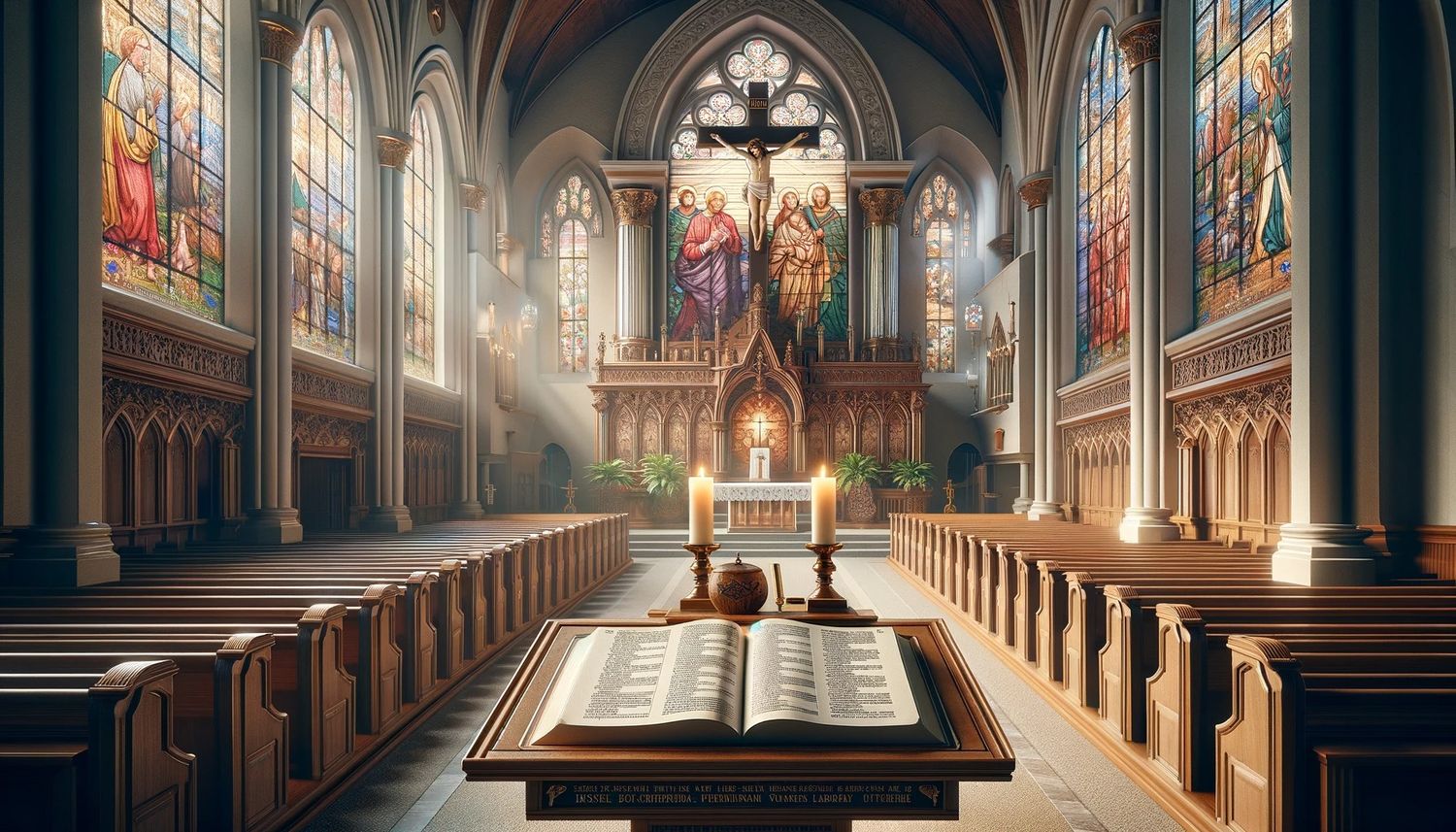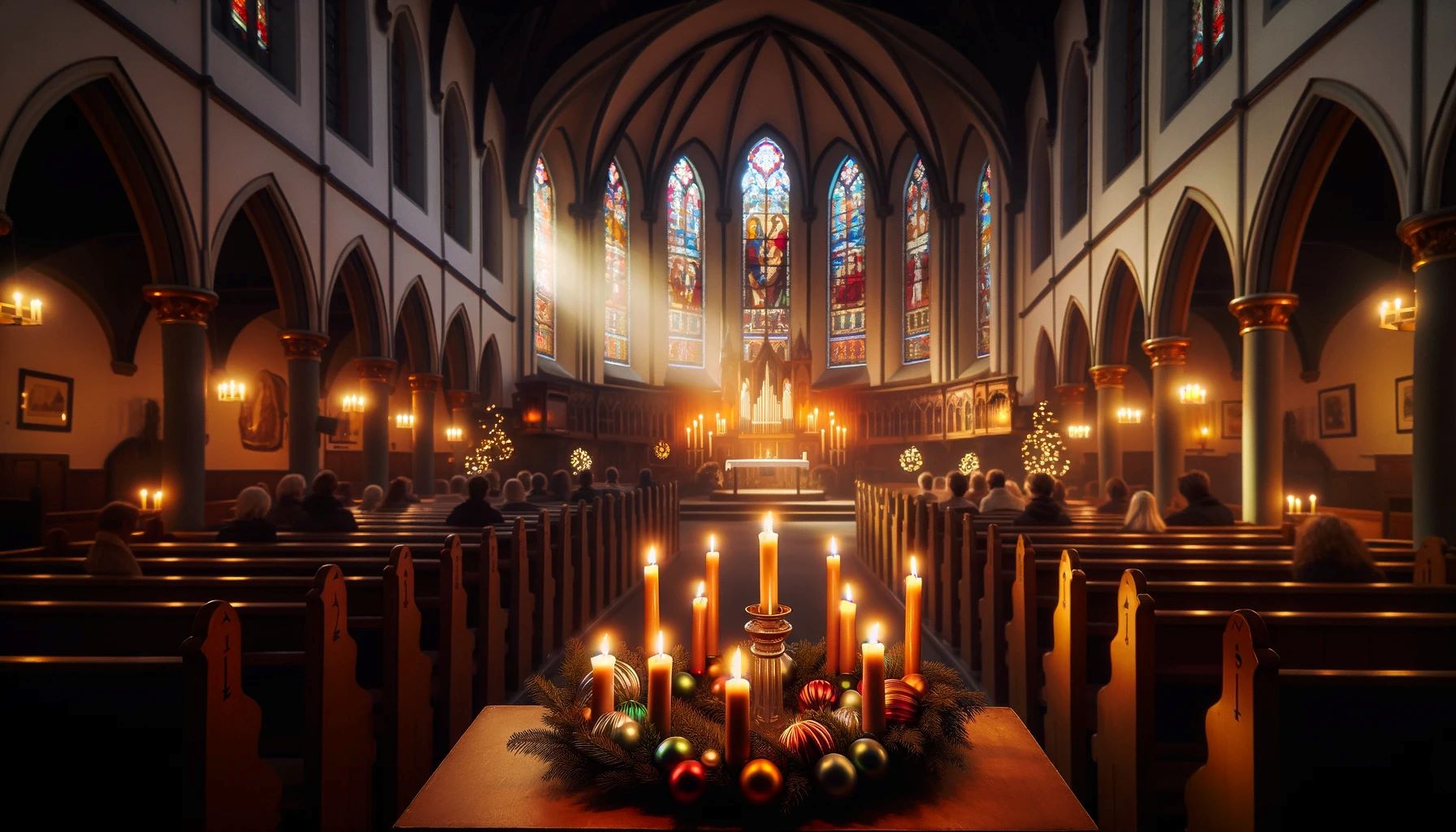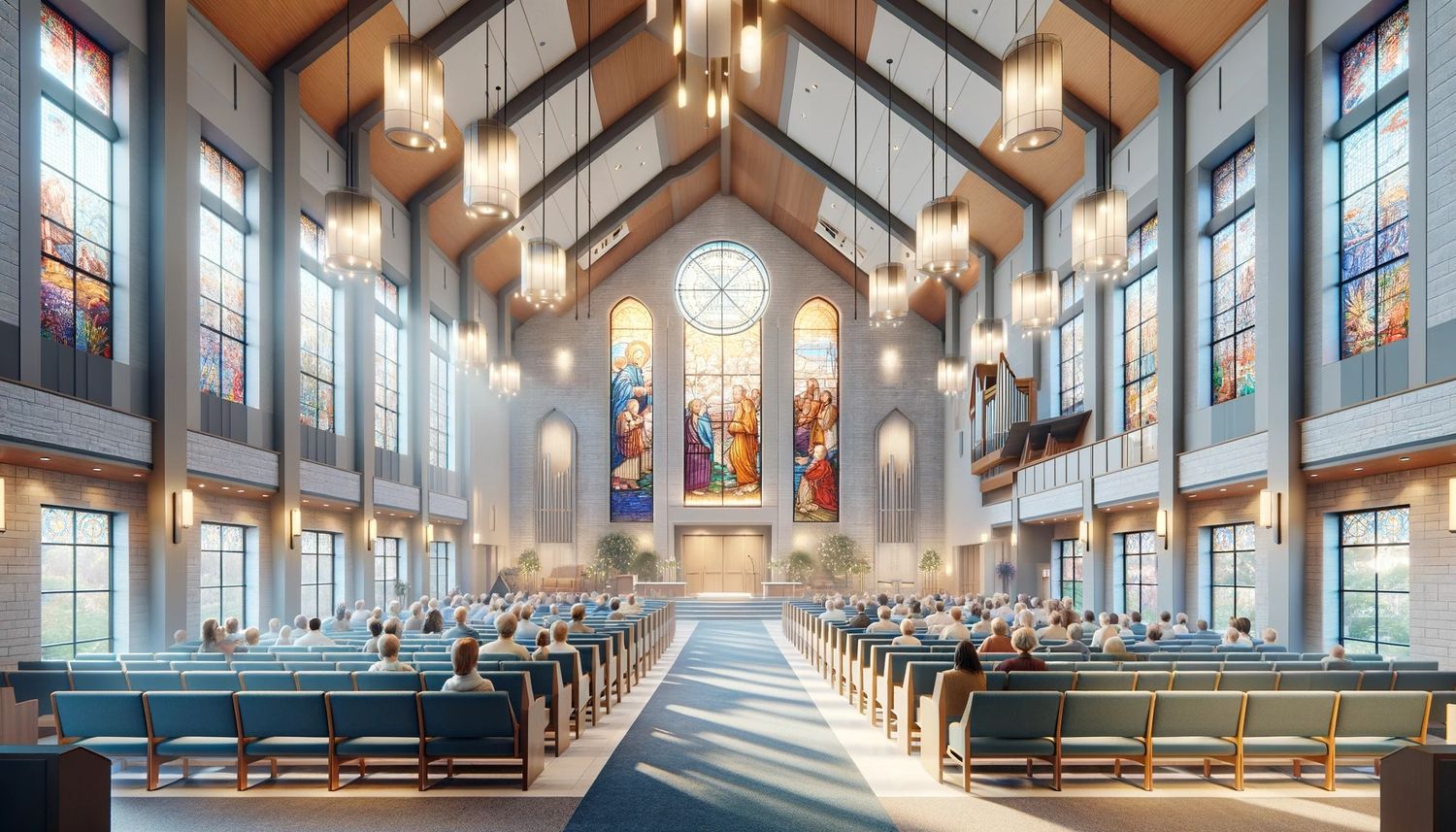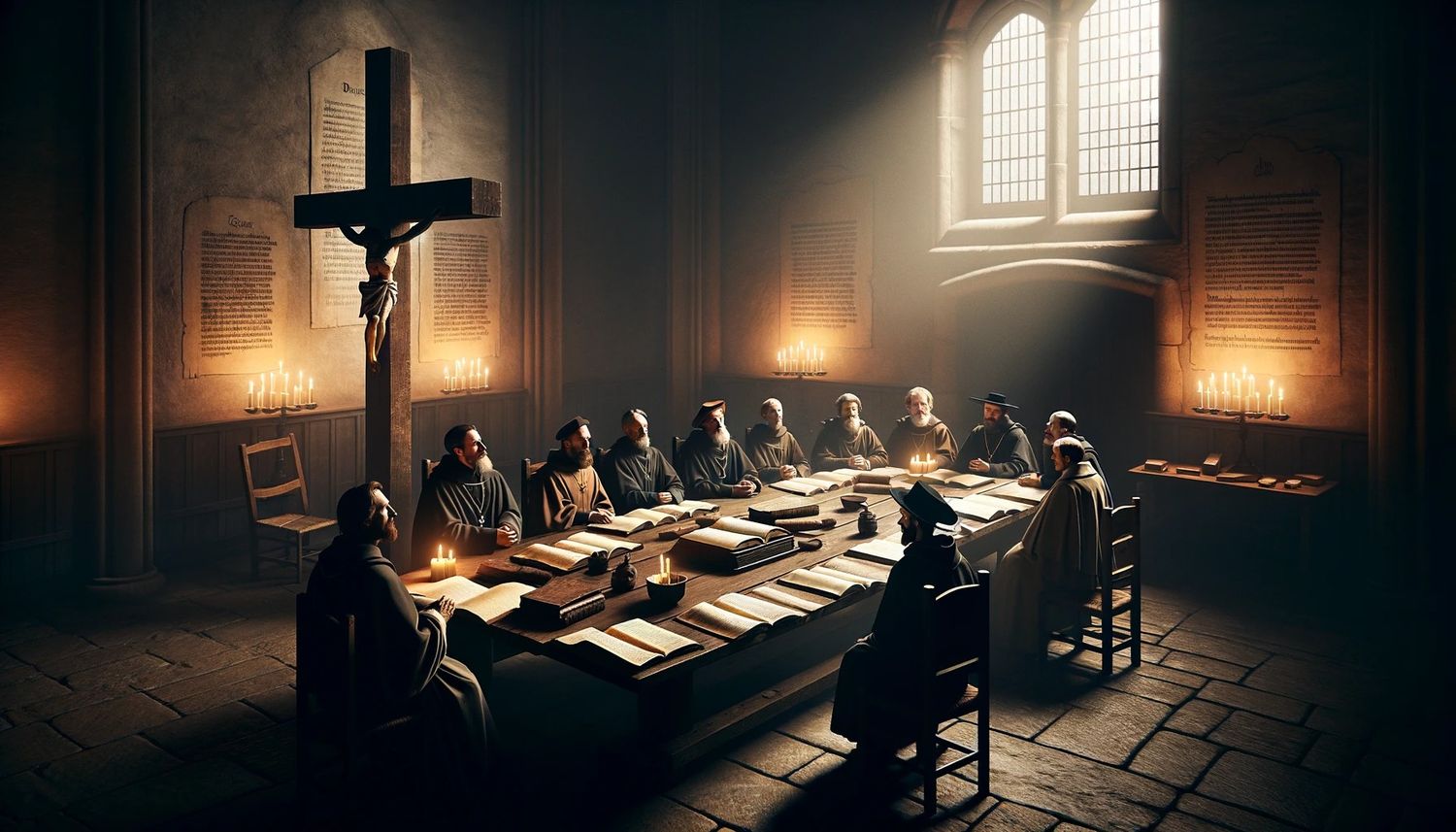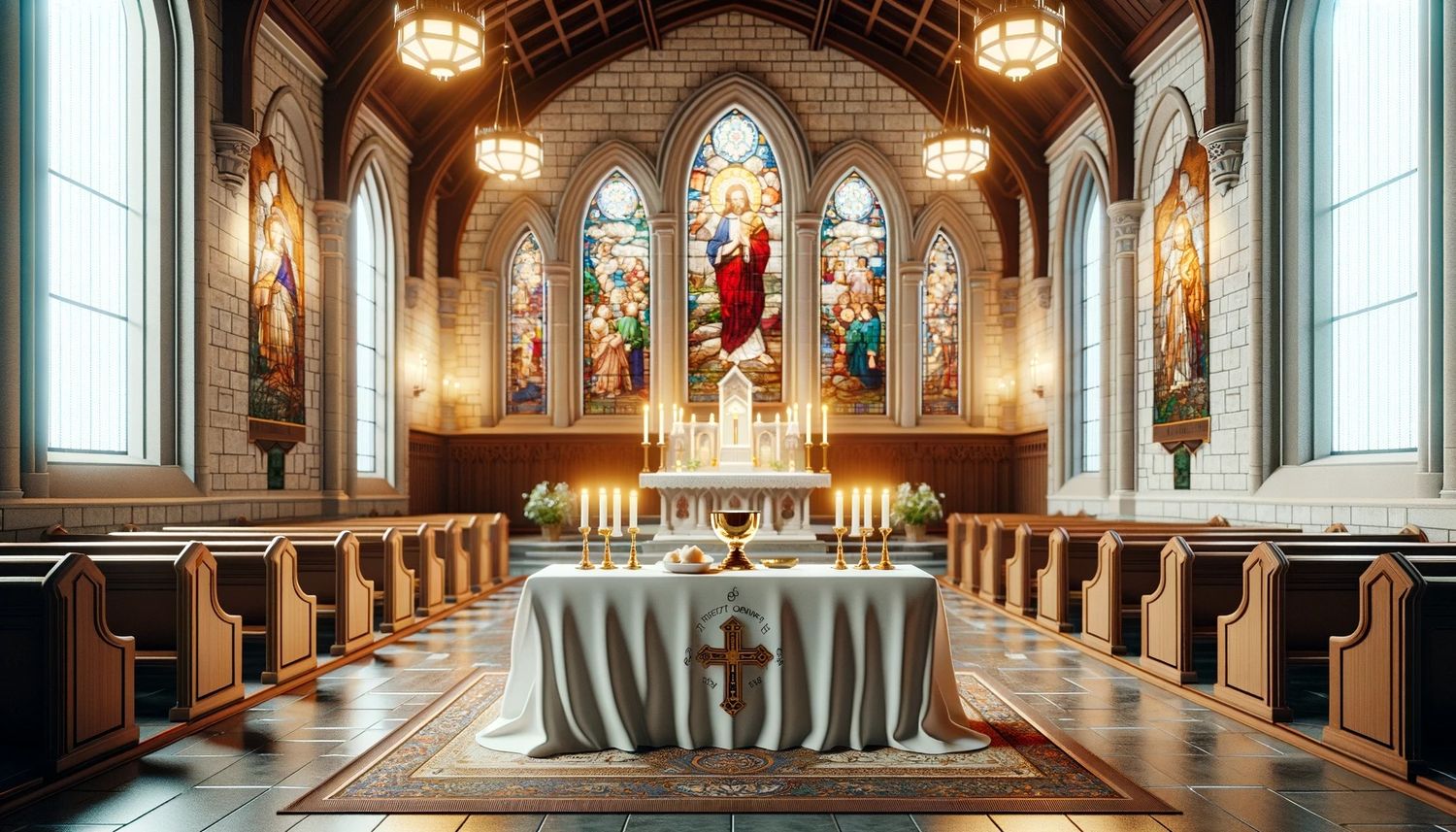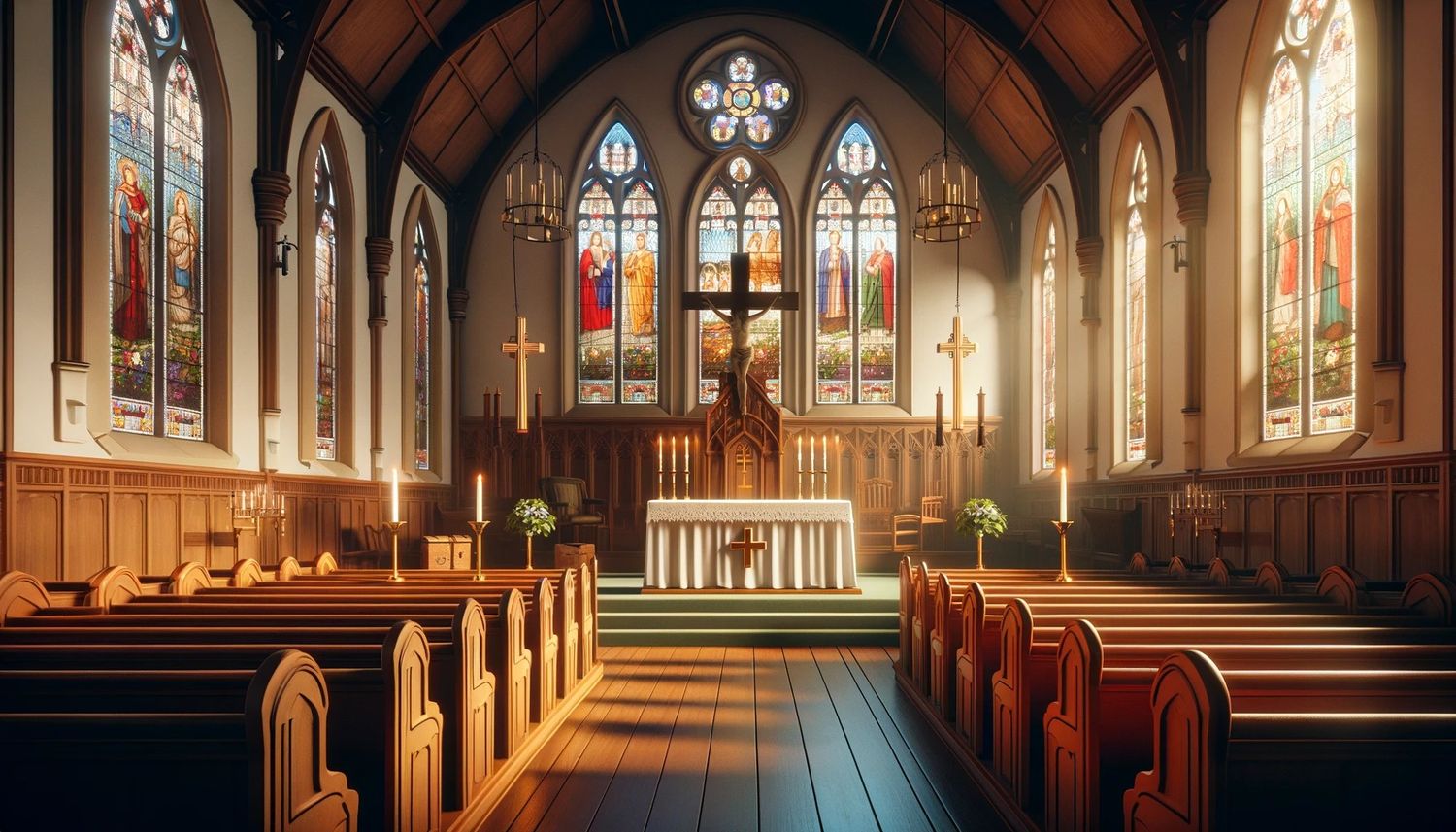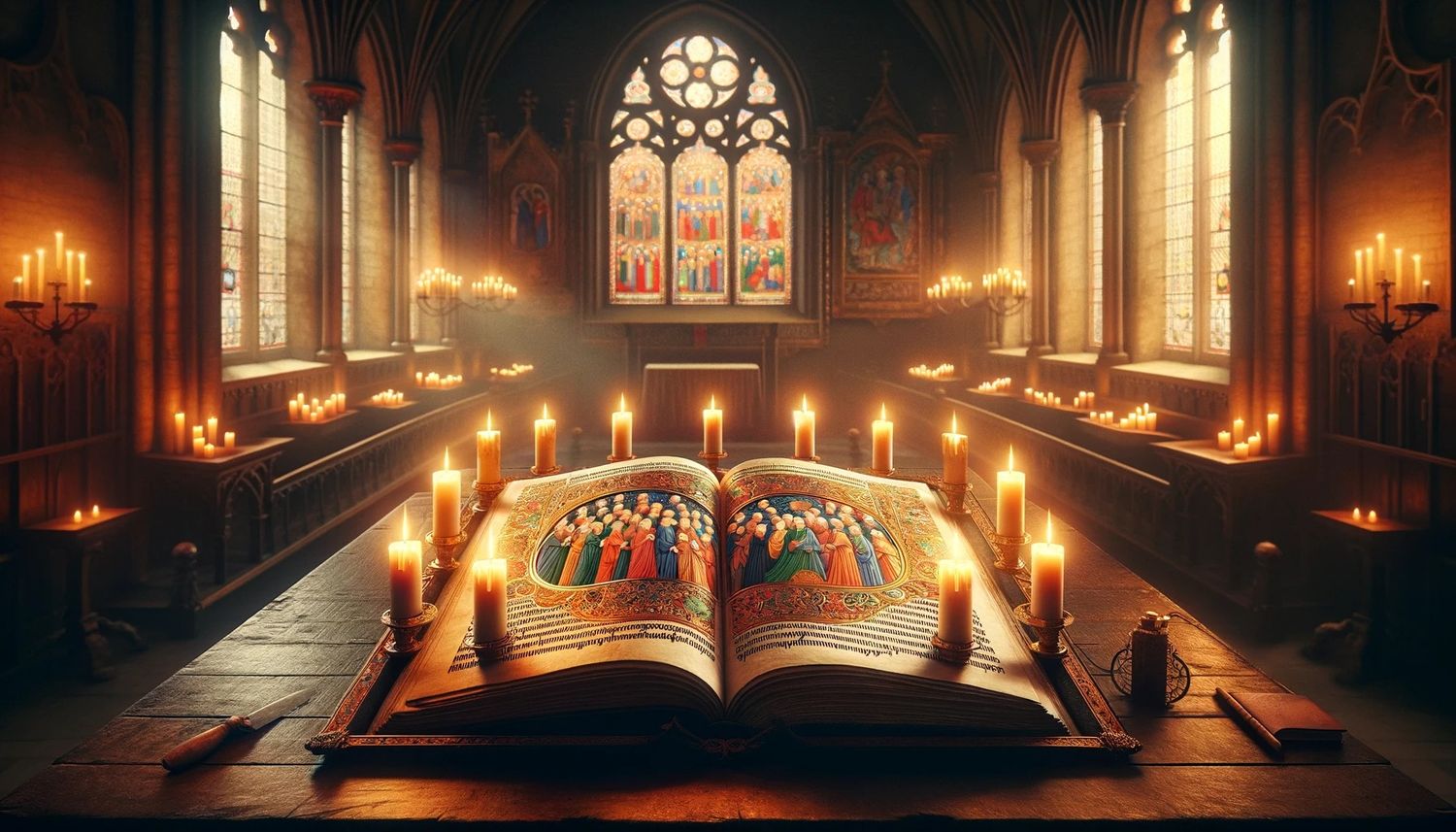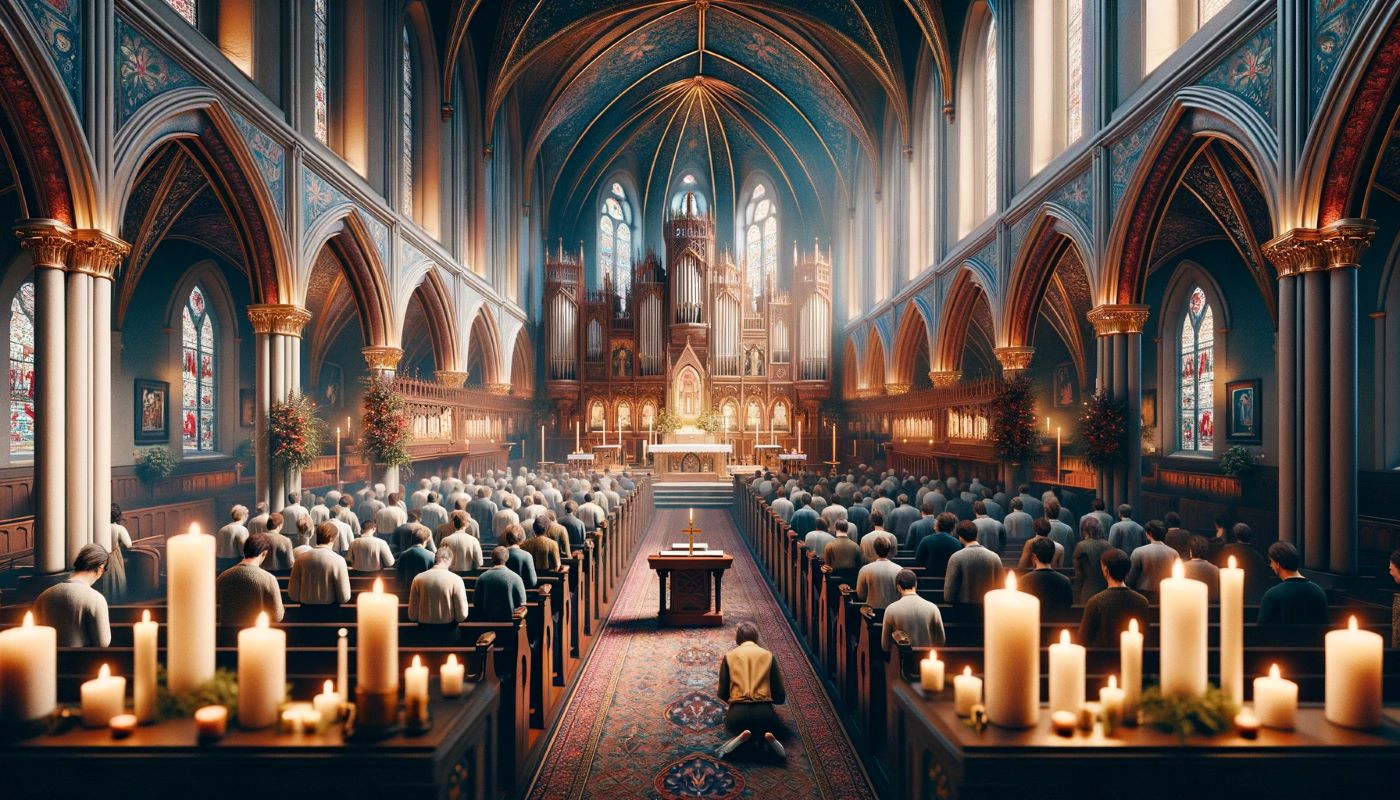Home>Theology and Spirituality>What Is Advent In Lutheran Church


Theology and Spirituality
What Is Advent In Lutheran Church
Published: March 3, 2024
Jason DeRose, Managing Editor at Christian.net, uses his expertise in religion and journalism to deepen understanding of faith's societal impacts. His editorial leadership, coupled with a strong academic background, enriches the platform’s diverse content, earning him recognition in both journalism and religious circles.
Discover the significance of Advent in the Lutheran Church and its impact on theology and spirituality. Explore the traditions and practices associated with this sacred season.
(Many of the links in this article redirect to a specific reviewed product. Your purchase of these products through affiliate links helps to generate commission for Christian.net, at no extra cost. Learn more)
Table of Contents
The History of Advent in the Lutheran Church
Advent in the Lutheran Church has a rich history that dates back to the early centuries of Christianity. The word "Advent" is derived from the Latin word "adventus," meaning "coming" or "arrival." It marks the beginning of the liturgical year and is a time of expectant waiting and preparation for the celebration of the birth of Jesus Christ at Christmas. The observance of Advent in the Lutheran Church can be traced back to the 4th and 5th centuries when it was established as a period of fasting and penitence in preparation for the feast of the Nativity. Over time, the observance of Advent evolved to include the themes of hope, peace, joy, and love, represented by the lighting of the Advent wreath.
-
Early Origins: The early Christians observed a period of fasting and preparation leading up to the celebration of Christ's birth. This practice eventually evolved into the liturgical season of Advent as we know it today.
-
Liturgical Development: The structure of Advent as a season of the church year began to take shape in the medieval period. The focus on the coming of Christ, both in his incarnation and his anticipated return, became central to the observance of Advent.
-
Reformation Influence: During the 16th-century Protestant Reformation, the observance of Advent was retained in the Lutheran Church, albeit with some modifications. The emphasis on the coming of Christ and the themes of hope, peace, joy, and love continued to be integral to the Advent season.
-
Modern Practices: Today, the observance of Advent in the Lutheran Church encompasses a rich tapestry of traditions, including the lighting of Advent candles, the use of Advent calendars, and the singing of hymns and carols that reflect the themes of the season. The historical significance of Advent in the Lutheran Church underscores its enduring importance as a time of spiritual preparation and joyful anticipation for the celebration of Christ's birth.
The history of Advent in the Lutheran Church is a testament to the enduring significance of this season as a time of spiritual reflection, anticipation, and celebration within the broader tapestry of Christian tradition.
Read more: What Is The Lutheran Church
The Significance of Advent in Lutheran Worship
Advent holds profound significance in Lutheran worship, serving as a time of spiritual preparation and anticipation for the celebration of Christ's birth. The season of Advent is marked by a sense of joyful expectation and hope, as it directs the focus of the faithful towards the coming of Jesus Christ. The observance of Advent in Lutheran worship underscores the themes of hope, peace, joy, and love, which are symbolized by the lighting of the Advent wreath. This period of waiting and preparation provides a meaningful opportunity for believers to reflect on the profound significance of the Incarnation and to renew their faith in the promise of Christ's return. In Lutheran worship, Advent serves as a time of spiritual renewal, deepening of faith, and joyful anticipation of the fulfillment of God's promises.
The Significance of Advent in Lutheran Worship:
-
Spiritual Preparation: Advent is a time for Lutheran worshipers to engage in spiritual preparation, setting aside moments for reflection, prayer, and repentance. It offers a space for believers to prepare their hearts and minds for the celebration of Christ's birth and to recommit themselves to the teachings of Jesus.
-
Anticipation of Christ's Coming: The season of Advent in Lutheran worship emphasizes the anticipation of Christ's coming, both in the historical event of his birth and in the future promise of his return. This focus on anticipation fosters a sense of hope and expectation among the faithful, reminding them of the central message of the Gospel.
-
Symbolism of the Advent Wreath: The lighting of the Advent wreath in Lutheran worship holds deep symbolism, with each candle representing a different aspect of the Advent journey – hope, peace, joy, and love. As each candle is lit in successive weeks, it serves as a visual reminder of the spiritual progression towards the celebration of Christ's birth.
-
Renewal of Faith: Advent provides an opportunity for the renewal of faith in Lutheran worship. Through the observance of this season, believers are encouraged to rekindle their commitment to Christ, to seek reconciliation, and to embrace the message of redemption and salvation.
-
Focus on the Incarnation: The significance of Advent in Lutheran worship lies in its emphasis on the Incarnation – the belief in the Word becoming flesh in the person of Jesus Christ. This theological focus underscores the profound mystery of God's presence among humanity and the transformative impact of Christ's birth on the world.
In Lutheran worship, the significance of Advent is woven into the fabric of the liturgical calendar, serving as a time of spiritual renewal, joyful anticipation, and deep reflection on the central themes of the Christian faith.
Advent Traditions and Practices in the Lutheran Church
-
Advent Wreath: One of the central traditions in the Lutheran Church during Advent is the use of the Advent wreath. The wreath typically consists of evergreen branches, symbolizing eternal life, and is adorned with four candles, each representing a different week of Advent. The lighting of the candles, one for each week leading up to Christmas, serves as a visual representation of the increasing anticipation and preparation for the birth of Christ.
-
Advent Calendars: Advent calendars are a popular tradition in the Lutheran Church, especially among families and children. These calendars often contain 24 doors or drawers, each concealing a small gift, scripture verse, or piece of chocolate. Each day leading up to Christmas, a door is opened, symbolizing the countdown to the celebration of Christ's birth.
-
Liturgical Colors: In the Lutheran Church, the liturgical color for Advent is typically purple or blue, symbolizing penitence, preparation, and royalty. The use of these colors in vestments, paraments, and decorations serves as a visual reminder of the solemn yet hopeful nature of the Advent season.
-
Special Hymns and Music: Advent in the Lutheran Church is accompanied by a rich repertoire of hymns and music that reflect the themes of the season. Traditional Advent hymns such as "O Come, O Come, Emmanuel" and "Come, Thou Long-Expected Jesus" are sung during worship services, evoking a sense of longing, anticipation, and hope.
-
Advent Devotions and Readings: Many Lutheran congregations observe Advent with special devotional readings and practices. These may include the use of an Advent devotional guide, scripture readings focused on the prophecies of the Messiah, and reflections on the themes of hope, peace, joy, and love.
-
Service Projects and Acts of Charity: Advent is also a time for the Lutheran Church to engage in acts of charity and service. Many congregations organize outreach programs, food drives, and initiatives to support those in need, reflecting the spirit of giving and compassion embodied in the message of Christ's birth.
-
The Jesse Tree: Some Lutheran families and congregations incorporate the tradition of the Jesse Tree into their Advent observance. The Jesse Tree is a symbolic representation of the genealogy of Jesus, tracing the lineage of Christ through the Old Testament figures, and is often used as a tool for teaching and reflection during the Advent season.
-
Advent Wreath Lighting Ceremony: In Lutheran congregations, the lighting of the Advent wreath is often accompanied by a special ceremony or liturgy. Each week, a different member of the congregation, such as a family, a youth group, or a ministry team, may be invited to participate in the lighting of the candles, offering prayers and reflections related to the weekly theme.
-
Fasting and Prayer: While not as prominent as in some other Christian traditions, fasting and prayer may also be observed by individuals or congregations as a means of spiritual preparation during the Advent season.
-
Decorations and Symbols: The Lutheran Church often decorates its sanctuaries and worship spaces with symbols and decorations that reflect the themes of Advent, such as the use of evergreen wreaths, symbols of the Nativity, and depictions of the prophetic promises of the Messiah.
In the Lutheran Church, these traditions and practices serve to enrich the observance of Advent, fostering a sense of spiritual preparation, anticipation, and joyful expectation as the faithful await the celebration of Christ's birth.
The Role of Advent in Lutheran Theology
-
Theological Anticipation: Advent plays a pivotal role in Lutheran theology as it embodies the theological anticipation of the coming of Christ. It serves as a time of reflection on the historical event of Christ's birth and the future promise of his return. This theological perspective underscores the central message of the Gospel and the foundational beliefs of the Lutheran tradition.
-
Incarnation and Redemption: Within Lutheran theology, Advent holds significance as a period that emphasizes the Incarnation – the belief in the Word becoming flesh in the person of Jesus Christ. This theological concept is central to the Lutheran understanding of redemption and salvation, as it signifies God's profound act of entering into human history to bring about reconciliation and renewal.
-
Theological Themes: The themes of hope, peace, joy, and love, which are central to the observance of Advent, resonate deeply within Lutheran theology. These themes are woven into the theological fabric of the Lutheran tradition, reflecting the foundational principles of faith, grace, and the redemptive work of Christ.
-
Prophetic Fulfillment: Advent in Lutheran theology is intricately linked to the fulfillment of Old Testament prophecies concerning the coming of the Messiah. The season serves as a time to contemplate the prophetic promises of God and their realization in the person of Jesus Christ, reinforcing the theological continuity between the Old and New Testaments.
-
Preparation and Repentance: The theological significance of Advent in Lutheran theology is underscored by its emphasis on spiritual preparation and repentance. It provides a space for believers to engage in self-examination, to seek reconciliation, and to renew their commitment to the teachings of Jesus, aligning with the Lutheran theological emphasis on grace, faith, and the transformative power of God's love.
-
Eschatological Hope: Within Lutheran theology, Advent also carries eschatological significance, pointing to the future hope of Christ's return. This theological perspective instills a sense of anticipation and readiness for the fulfillment of God's ultimate purposes, emphasizing the Lutheran belief in the consummation of God's kingdom and the restoration of all creation.
In Lutheran theology, the role of Advent is deeply intertwined with the foundational tenets of the faith, serving as a time of theological reflection, anticipation, and renewal of the central theological themes that define the Lutheran tradition.
Celebrating Advent in the Lutheran Church Today
In the contemporary context, the celebration of Advent in the Lutheran Church continues to hold profound significance, shaping the spiritual journey of believers and fostering a sense of communal anticipation and joy. The observance of Advent in the Lutheran Church today is characterized by a rich tapestry of traditions, practices, and theological reflections that resonate with the timeless message of hope, peace, joy, and love.
-
Inclusive Worship Services: Lutheran congregations today often incorporate special Advent-themed worship services, where the liturgy, hymns, and scripture readings are carefully curated to reflect the themes of the season. These services provide a space for communal reflection, prayer, and the proclamation of the Gospel message, inviting believers to immerse themselves in the spiritual richness of the Advent journey.
-
Advent Devotional Resources: Many Lutheran churches offer Advent devotional guides and resources to support individuals and families in their spiritual observance of the season. These resources may include daily readings, reflections, and prayers that center on the themes of Advent, providing a framework for personal and communal spiritual growth during this time.
-
Community Outreach and Service: Advent in the Lutheran Church is often accompanied by initiatives that embody the spirit of giving and compassion. Congregations engage in acts of service, outreach to the marginalized, and support for those in need, reflecting the message of love and generosity that lies at the heart of the Advent season.
-
Youth and Family Activities: Lutheran communities place a strong emphasis on involving youth and families in the observance of Advent. Special activities, such as Advent wreath-making workshops, family-centered devotional practices, and educational programs, are designed to engage the younger members of the congregation in the significance of Advent and its relevance to their lives.
-
Cultural and Musical Celebrations: The celebration of Advent in the Lutheran Church often encompasses cultural and musical expressions that add vibrancy to the observance of the season. Concerts, choral performances, and artistic presentations centered on Advent themes serve to deepen the spiritual experience and create a sense of communal celebration.
-
Digital Engagement: In the modern era, Lutheran congregations utilize digital platforms to extend the reach of Advent observance. Online Advent calendars, virtual worship services, and social media campaigns are employed to connect with members of the community and to share the message of Advent in innovative and accessible ways.
-
Emphasis on Hope and Renewal: Above all, the celebration of Advent in the Lutheran Church today underscores the enduring message of hope and renewal. It serves as a time for believers to rekindle their faith, to embrace the promise of Christ's coming, and to embody the transformative power of the Gospel in their lives and communities.
In the contemporary landscape, the celebration of Advent in the Lutheran Church stands as a testament to the enduring relevance of this season, offering a profound opportunity for spiritual growth, communal fellowship, and joyful anticipation as the faithful prepare to welcome the birth of Christ anew.




